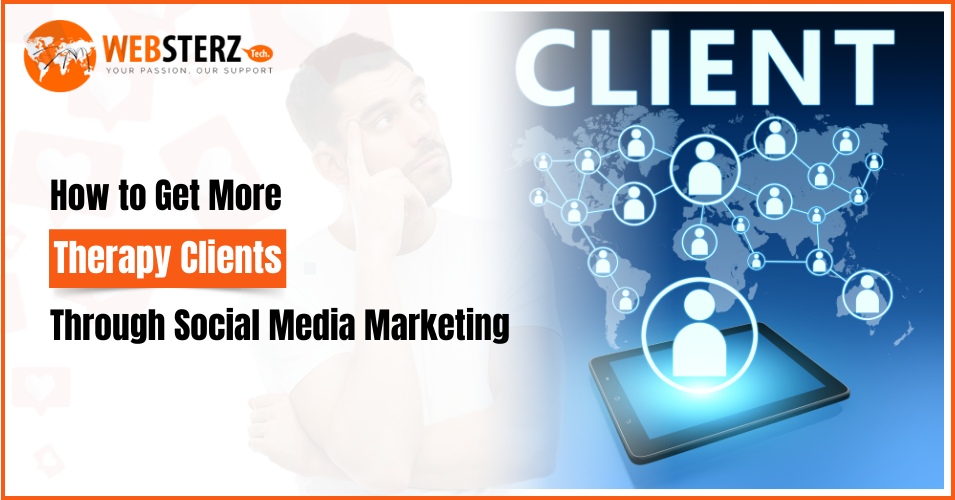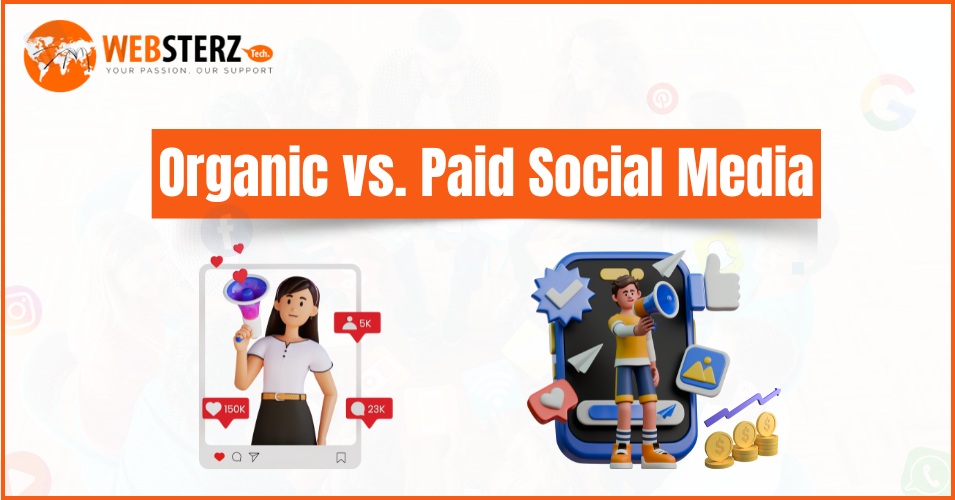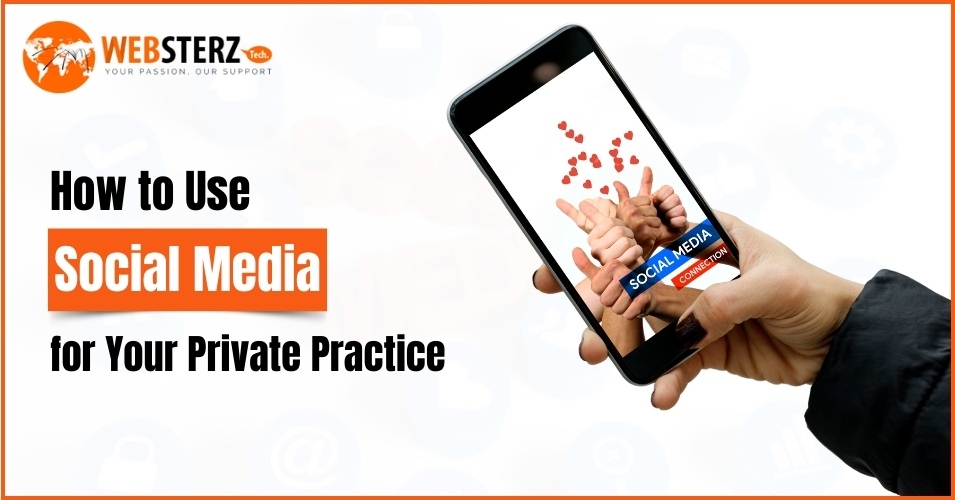How to Get More Therapy Clients Through Social Media Marketing

Let’s be honest — finding new clients as a therapist can feel overwhelming. There are a lot of professionals out there, and sometimes it feels like everyone is offering the same thing. But if you want to grow your practice, earn more, and—most importantly—help more people, finding the right clients is essential. The truth is, standing out in a crowded mental health field does not mean you have to be flashy or complicated. It just means you need to be visible and genuine. People are already searching for support—you just need to make it easy for them to find you. And here is the good news: You do not need a huge marketing budget or flashy ads. You need a simple mindset shift and a few smart strategies that make your services more visible and approachable online. ‘ Keep reading for more insights into how you can get more therapy clients through social media marketing for therapists. 1. Start With a Website That Feels Like You Your website is often the first place a potential client will meet you. That is why it is worth putting some love and effort into it. Start with the basics: A warm, welcoming photo of yourself A short, honest bio about who you are and how you help A simple logo, calming colours, and fonts that match the vibe of your practice Make sure everything—from your website to your social media—has a consistent look and feel. That way, people recognize and trust you across every platform. Now, imagine someone visiting your site. They might be feeling anxious, unsure, or even a little lost. Your words should speak directly to that version of them. Show them what it might feel like to work with you. Offer reassurance, safety, and hope. Help them picture the experience of healing and support. Make sure you include helpful info like: What services you offer How to book an appointment A photo of your office (if you have one!) Where you are located Bonus tip? Start a blog. Sharing thoughtful posts about topics you care about—like anxiety, relationships, or self-care—can help you connect with more people and boost your visibility online. Google loves fresh, helpful content. Your website does not need to be fancy. It just needs to feel human, real, and like a safe space for someone who is looking for support. 2. Be Real on Social Media Social media does not have to be intimidating. You do not need to be a content creator or influencer to make an impact. In fact, the most powerful thing you can do is just be yourself. People are craving realness. They want to feel seen, heard, and understood. So, when using social media for your private practice, instead of trying to be perfect, focus on showing up as a real person who genuinely cares. Here is what that might look like: Share thoughts on mental health topics you are passionate about Post simple tips that can help people feel a little better Talk about common struggles (anxiety, burnout, boundaries, etc.) Use your voice — speak in a way that feels natural and conversational And yes, you can talk about your services, too! Just make it feel like an invitation, not a sales pitch. Something like: “If this sounds like something you are struggling with, I am here to help. You can book a session through the link in my bio.” 3. Pick One Platform and Be Consistent When using social media marketing to reach your audience, remember you do not have to be everywhere. Instagram, TikTok, LinkedIn, Facebook — it is too much to manage all at once. Choose a platform that feels right for you and your ideal clients. Then, post consistently. That could mean once a week, or twice a week — whatever you can stick with. Over time, consistency builds trust. It helps people get to know you, feel connected to you, and eventually reach out when they are ready. Pro tip: Do not aim for perfection, aim for connection. A simple, honest post will always beat a polished one that feels forced. 4. Use Stories and Video to Build Trust People want to know who they will be working with. A photo or a written post is great, but a video adds another layer of connection. Even short clips of you talking about mental health or sharing gentle reminders can go a long way. Instagram Stories, Reels, or TikTok do not need to be fancy. Just be yourself. Not sure what to say on video? Try: “A reminder for anyone feeling overwhelmed today…” “Here is one small thing that helps with anxiety…” “Let’s talk about what therapy really looks like…” Remember: your goal is not to go viral — it is to be relatable, trustworthy, and helpful. 5. Make It Easy to Reach You Once someone connects with your content, they need to know how to take the next step. So make it simple: Add a booking link in your bio Highlight your contact info clearly Mention your location, or if you offer virtual sessions Add a “Work With Me” highlight to your Instagram profile The easier you make it for someone to reach out, the more likely they are to do so. 6. Make It Easy for Clients to Share Kind Words Happy clients can be your biggest supporters. When someone has a great experience in therapy, they often want to tell others about it—and that kind of word-of-mouth can be powerful. But here is the thing: most people won’t leave a review unless you ask and make it easy. If you have a website, include links to places where clients can leave a review, like Google. You can also gently mention it in your follow-up emails, social media, or after a few sessions—something simple like: “If you have found our work helpful and feel comfortable, I would really appreciate a review here [insert link]. It helps others know what to expect.” You can also
Organic vs. Paid Social Media- Choose the Right Channel

Did you know? As of 2025, over 5.24 billion people—about 64% of the world’s population—are using social media. Social media is a big part of our daily lives, and it is also a powerful way for the health and wellness sector to connect with people. Since almost everyone is scrolling, liking, and sharing every day, it gives therapists, counselors, chiropractors, etc., a great chance to reach their audience. However, here is the tricky part—should you grow your page naturally (that is, organic social media), or should you pay for ads to get faster results? It is not always easy to decide, because both options have their own pros and cons. Some studies say that organic social media brings in twice as many leads (potential customers) compared to paid posts. But on the other hand, global spending on social media ads reached $243 billion in 2024—up by 15% from the previous year and more than 50% higher than 2019. That shows more and more businesses are turning to paid ads to get quicker results and reach more people. So, what should your business do? In this blog, we will skim through what organic and paid social media really mean, what is good (and not so good) about each, and how you can choose the best path for your goals. Table of Contents What is Organic Social Media? What is Paid Social Media? Organic vs. Paid Social Media – A Simple Comparison Which One Should You Choose? Ready to Grow Your Therapy Practice? What is Organic Social Media? Organic social media is when businesses share posts, photos, videos, and stories on social media without paying for ads. It is about building a presence by connecting with your audience naturally. However, it can be hard because social media platforms use algorithms that decide what shows up. It takes time and effort, but with the right approach, organic social media marketing for therapists can help grow your brand and connect with more people. Examples of organic social media activities include- Share updates, tips, or stories often on your page—without paying to promote them Get your team involved by having them share company posts with their own friends and followers Reply to people’s comments and messages quickly, and make sure your responses sound real and friendly Highlight content made by your customers or followers, and create a welcoming space for interaction—without using paid rewards. When you post organically, your content reaches- A percentage of your followers (your ‘organic reach’) Your followers’ followers (if people choose to share your post) People following any hashtags you use Organic social media is the foundation of every digital marketing strategy because it helps brands- Establish their personality and voice Build relationships by sharing informative, entertaining, or inspiring content Engage customers at every stage of their buying journey Support their customers with customer service This is how organic media works; it takes time, but it eventually helps you grow. Advantages of Organic Social Medias One big plus of organic social media for therapists is that it is free! You can share your content without spending money and still reach many people. It also helps you build real relationships with your audience. By talking to your followers, answering their comments, and joining conversations, you create trust and loyalty. These followers can become your biggest fans, spreading the word about your brand to their friends and family. Organic social media is also great for showing the true side of your brand. You can share behind-the-scenes moments, user photos, or even what it is like to work at your company. This helps people connect with your brand on a personal level. Disadvantages of Organic Social Media Organic social media has some challenges. One of the biggest is that it takes time to grow your followers. You need to post great content regularly and interact with your audience to build a loyal group of followers. Moreover, this method can be slow and take a lot of effort. Another issue is limited reach. Your posts are mainly seen by your followers, so it can be tough to reach new people without paying for ads or using other marketing strategies. Social media platforms also change their algorithms often, which means your engagement could drop even if you are posting quality content. For example, a change in Instagram’s algorithm might reduce how many people see your posts. When you depend only on organic social media, you have little control over how your content is shared. It is a good idea to mix in other health and wellness marketing strategies, like email marketing or paid ads, to help spread your message and reduce your reliance on social media. Get a Free Consultation with Our Social Media Experts Contact Now! What is Paid Social Media? Paid social media is when businesses pay for ads to appear on social media platforms like Facebook or Instagram. These ads can be targeted to specific groups based on factors like age, location, and interests, so businesses can reach the right audience. With paid ads, you can get quick results and control who sees your ads, helping you reach more people. You can also track how well your ads are doing, such as how many people clicked or bought something. This helps you improve your ads to get better results. However, paid social media can be costly and requires time and effort to create ads that work well and attract the right customers. Examples of paid social media activities include- Boost your posts so more people can see them—even those who do not follow you Create ads that are aimed at specific age groups, locations, or interests to reach the right audience Promoting events, products, or services through sponsored posts Work with influencers and pay them to share your brand with their followers for a wider reach With paid ads, the health and wellness industry can increase visibility, drive traffic, and generate leads. It can help them raise brand awareness, promote new deals
How to Use Social Media for Your Private Practice

Social media is not just for selfies and funny videos anymore—it is a powerful way to help more people find your private practice. Whether you are a therapist, counselor or healthcare provider, social media can be a big help and also a great way to grow and make people trust you more. But here is the hard part: Many practice owners do not know what to post, where to start, or how to connect without feeling salesy or lost in the noise. It can feel confusing and even overwhelming. The good news? You do not have to be a tech genius to make this work. In this guide, we will skim through how to use social media for private practice in a simple, human way that feels right for you—and helps your wellness service grow with care and confidence. Understanding the Importance of Social Media for Private Practice Social media is not just about staying trendy. It lets therapists tap into lots of great perks that help grow and keep their practice stable and strong. When therapists use social media, they can become well known, build their seriousness and credibility, and connect with people who matter to them. An active presence online allows clients to know who you are as well as what you stand for. Building Brand Awareness Social media gives you an opportunity to highlight your expertise, your core values, and the special services you offer. By consistently sharing informative and helpful content, people begin to associate your name with trust and authority in mental health care. Being transparent about your mission and approach helps potential clients feel more comfortable reaching out. Engaging with Existing and Potential Clients Social media is a super quick way to connect directly with both new and existing clients right from the start. From answering questions people ask in the comments section to sharing those sweet gems of insight, you can really connect on a deeper level. Engagement helps build trust, as people can see your human side and approachability before they ever step into your office. Steps to Effectively Use Social Media for Your Private Practice. So, are you ready to dive into social media marketing for therapists? Here is how you can maximize your time and energy. Choose the Right Platform for Your Audience Find out where your ideal clients are spending their time online. Social media platforms such as Facebook and Instagram are extremely efficient at reaching large numbers of people. If you work mostly with corporate professionals or offer career-focused counseling, LinkedIn could be a better option for you. Create Valuable and Engaging Content Your content should provide value to your audience. Share tips for maintaining mental health, post motivational quotes, or create short videos explaining therapy topics. Your tone should always be casual, approachable, and friendly in your writing. Consistency here is key—you want people to rely on your posts for positivity and direction. Be Consistent and Authentic Your audience will connect with you more if you are genuine. Share posts regularly, but do not try to be someone you are not—it shows. Authenticity builds trust. If you have expertise in a certain field, do not be afraid to own it. Utilize Analytics to Track Growth Most social platforms have built-in analytics tools. Track engagement levels, follower counts, and other key data to see how your posts are performing. With this feedback, you can grow and refine your algorithm over time. Understand What Works: These tools are an integral part of smart health and wellness marketing strategies, telling you exactly what resonates best with your audience. Overcoming Common Challenges in Social Media Marketing for Therapists Sure, marketing your practice online is hard work, but with some good plans and strategy, you can deal with those challenges well and keep it neat and right at the same time. Maintaining Professional Boundaries It is really important to keep personal and professional life separate online. Use a dedicated account for your practice, and always maintain client confidentiality. Respond to inquiries professionally without overstepping boundaries. Time-Effective Social Media Management Managing social media should not take up your entire day. Schedule posts ahead of time using scheduling tools. There are great tools like Buffer or Hootsuite that can simplify this process for you and allow you to spend more time directly serving clients and customers. Handling Negative Feedback Receiving criticism or negative comments comes with the territory of being on a public platform. Stay calm and address feedback professionally. A well-handled response can demonstrate maturity and understanding, leaving a positive impression on other followers. The Bottom Line Using social media for private practice opens new doors for growth, connection, and education. Its potential is enormous, from establishing trust to interacting directly with clients. Take small steps, give it time, and most importantly, stay real. Social media is not just about promoting yourself—it is about building relationships and helping others. So, take that first step today. Whether this is your first update or you need to refine what you have already established, using social media can become an indispensable part of your practice. The sooner you begin, the faster you will see results!

